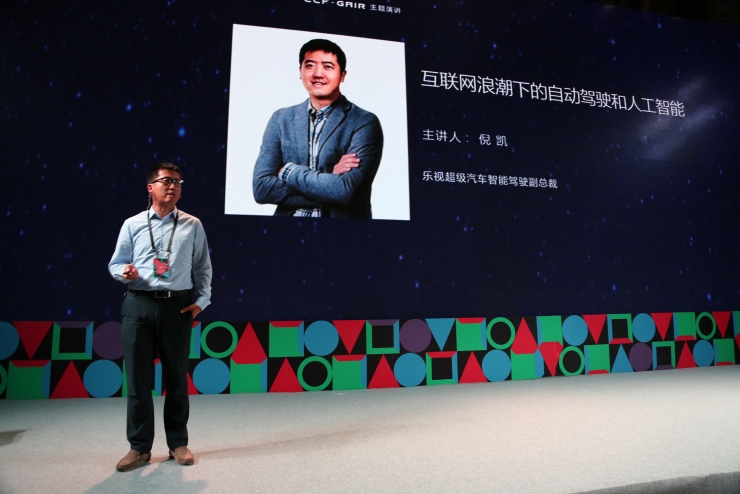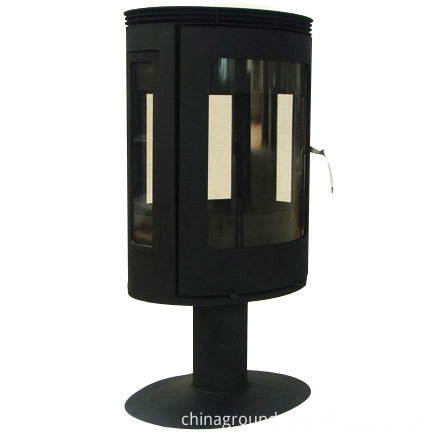On the second day of the CCF-GAIR summit, Ni Kai, vice president of smart driving from LeTV, shared with us some of his understanding of the current smart driving industry and explained why LeTV wanted to build cars, and here Some work in the field.

Ni Kai mentioned two recent accidents that Tesla had made. One time, a car was anchored and stopped in the emergency lane. Tesla did not detect the car and inserted it directly. The second accident was even more serious and dramatic: Tesla's sensors did not detect a white crossroad that was turning in the middle of the road and hit it directly. The accident led to the death of a life. This led him to start thinking about current autopilot and feel that autopilot is still a bit far from being used by consumers.
Ni Kai believes that the current artificial intelligence is not strong enough to be able to achieve a good enough autopilot experience with the same information as people. Solving this matter is a key to improving the practical level of autopilot.
To solve this problem, Ni Kai's solution is divided into two aspects: hardware and software:
On the hardware side, the first is to combine the data of more sensors as the basis for judgment. Overlap their advantages and make up for their own deficiencies. This allows other sensors to output the correct data even if several of them fail. Ni Kai mentioned that LiDAR is a very promising solution. When the number of sensors increases, there may be some additional development costs. For example, when cameras and radars collect data at slightly different time points, they need to calculate the spatial relationship between them by the target data, and then they can do it. Fusion, multi-radar data also need to be marked and so on. However, this cost must be paid.
The second is more use of map information. Ni Kai said that his personal opinion is: The map can be regarded as an additional sensor. When using map information, it is best to use some high-precision map information. This high precision means not only higher accuracy, but also some additional useful information for driving.
The third is to establish a more efficient computing platform. Intel and BMW recently established a coalition. Intel, as a traditional non-automotive industry vendor, also began to pay attention to the on-board computing platform, which means that everyone attaches great importance to this platform. Companies that previously focused on smart driving, such as Mobileye, have already implemented their own embedded computing platforms. Everyone realizes that achieving better autopilot performance requires a better computing platform.
The software also has three major challenges. The first is the computational framework. Because the automated driving software is very complex, they all need a good computing framework. Compared to the traditional technical framework, there is now a new type of framework: its idea is to pass the data of the input sensors through a deep learning network to get the final control directly, so it skips all intermediate stages, Including perception, planning in the middle. Such a very concise method looks very good, but Ni Kai believes that it can not replace the first-generation network for the time being, because it has a relatively short time to launch, and this kind of network itself is changed because of its possibility of happening to a very small number of scenarios. Small, so it requires a very large amount of training data, there will be an exponential growth, the current training data does not reach a very satisfactory level, so that training data become more distant, so in the short term this training Data will not become mainstream, but it will become a very promising software architecture in the long run.
Second, due to the automotive industry's own requirements, it requires a lot of testing and verification. Due to its technical particularity, autopilot requires more diversity in test scenarios. Apart from testing in various environments, it may also need to be opened when the road is busy, or it may need to be opened when there are many pedestrians, so it is not It is possible that a new automatic driving function will come out and allow all vehicles to complete the road test in a very short period of time. This means that more than the traditional assisted driving will require higher requirements on the vehicle test. This requirement must be satisfied. The big one may be to use the simulator in the future and carry out more verification on this simulator through the collected data. Ni Kai believes that this may be a challenge in the future.
The third is security challenges, including security considerations such as stability and system security.
Ni Kai finally introduced the current R & D direction of LeTV. Ni Kai said that currently LeTV's R & D is divided into five pieces: The first one is human-computer interaction. Ni Kai believes that human-computer interaction is a very important part of a mature product. The second piece is the sensor. Regarding this point, different manufacturers have already done many sensors work, so LeTV may be more in line with these vendors. The third and fourth place is the development sense and planning. Some of these technologies, Ni Kai, said that because after receiving the sensor, LeTV needed to process this information to identify and track the surrounding environment and dynamic static objects, including the need to make corresponding vehicle trajectories and behaviors based on the current driving goals. Planning. Finally, we hope to increase the compatibility of this technology so that it can be applied to different vehicles. For example, if you buy a laser radar or camera, it will certainly apply to different vehicles. Nikai said that LeTV hopes their technology Not only for its own car, but also for other partners, it will study technologies that combine with more vehicles.
Ni Kai also stated that LeTV also chose to use electric vehicles as the carrying platform for its own autopilot system. This is because of considerations of environmental protection, and it also hopes to give the user an operating system that spans TV mobile phones and cars. Complete seamless switching experience on different smart terminals.
Our Foundry for cast iron stove / wood burning stove located in Cangzhou city of China ,the famous " township of the casting " ,Cangzhou iron lion, had more than 1000 years history .So we have more experience of casting .
We also have steel plate stoves with classic designs .
All of the cast iron stoves with high temperature painting ,with antique design and high quality workmanship .Cast iron stoves / Wood Burning Stoves/steel stoves are popular in European markets,USA markets, Australian markets and other markets .


Cast Iron Stove,Wood Burning Stove,Steel Plate Stove,Small Stove
BAODING JIMAOTONG IMPORT AND EXPORT CO., LTD , https://www.chinagroundscrew.com